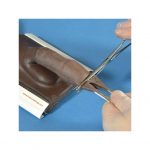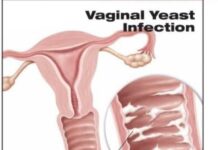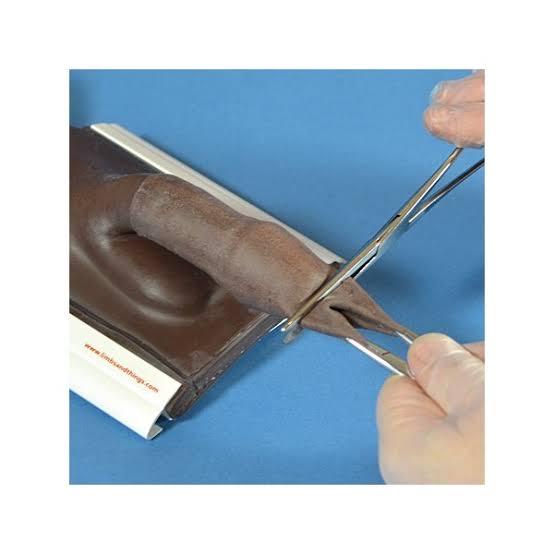The practice of male circumcision confers lots of benefits to both men and women and is saving many lives worldwide
Circumcision is the removal of a simple fold of skin (the ‘foreskin’ or ‘prepuce’) that covers the head (glans) of the un-erect penis. The amount of this skin varies from virtually none to a considerable amount that droops down from the end of the flaccid penis. Thus, in some men, during an erection, the head of the penis peeks out from the loose foreskin that surrounds it, but in men with a lot of foreskin the head of the penis remains covered, either partially or completely. A recent questionnaire-based survey conducted by Badger in Sydney, Australia found that among men with a foreskin, in 67% the foreskin not only covered the glans of the penis when flaccid, but there was extra skin hanging off the end, in 15% it just covered the glans, in another 15% it half covered the glans, and in 4% the glans was bare. In the erect state these numbers were 15% extra skin, 22% still covered, 32% half covered, and 41% glans bare.
Racial differences exist. For example, in Malaysia, New Guinea, Sri Lanka and southern India the foreskin is very long and ends in a narrow extension that acts like a muzzle. This is an impediment to sexual intercourse, so that circumcision facilitates procreation for these men. A short prepuce that rarely covers the glans completely is seen in Whites of the Northern Mediterranean and many Asians (Chinese and Japanese). In uncircumcised males the head of the penis is pink. This becomes more apparent when the head of the penis emerges during an erection, giving the overall penis a “two-toned” look. In male babies, the foreskin is lightly attached to the penis underneath it, much like the skin on an orange, and comes free over the course of the first few years of life. A variety of methods are, moreover, used to remove the foreskin, and the amount eliminated also varies. The hygiene of an uncircumcised penis is very cumbersome. The proponents of not circumcising nevertheless stress that lifelong penile hygiene is required. This acknowledges that something harmful or unpleasant is happening under the prepuce.
Studies of middle class British and Scandanavian schoolboys concluded that penile hygiene, as such, is at best poor and at worst non-existent. Medical practitioners and circumcision experts usually state “What man after a night of passion is going to perform penile hygiene before rolling over and snoring the night away (with pathogenic organisms multiplying in the warm moist environment under the prepuce)”. The bacteria start multiplying again immediately after washing and contribute, along with skin secretions, to the whitish film, called ‘smegma’, that is found under the foreskin. Bacteria give off an offensive odour. Men differ in their sensitivity to this smell and some shower several times a day as a result. Some uncircumcised men, and/or their partners, find the stench so unpleasant that the smell has caused these men to seek a circumcision on this basis alone. Penile hygiene is often difficult to achieve and attempting a very high degree of hygiene in uncircumcised men can result in new dermatological problems. For mothers and fathers, it is far easier to maintain cleanliness of their son’s penis if it is circumcised. If their son is not circumcised the messages are confusing: should they clean under the foreskin or leave it alone? Anti-circ activists make unusual claims about the smegma and even claim there are glands under the foreskin that secrete pheromones important in sexual attraction. There is no support for such claims and all of their statements should be regarded as fantasies unless proved otherwise by credible scientific evidence.
The wet tip of an uncircumcised penis could permit quicker penetration. However, the requirements of the modern woman generally differ somewhat from this kind of sex, which might have had some benefit for primitive humans who may have wanted to complete the sex act quickly to minimize the time they were vulnerable to predators. Uncircumcised individuals are at risk of catching many infectious diseases.
Medical practitioners and scientists have suggested that the increased risk of infection in the uncircumcised may be a consequence of the following: 1) The foreskin presents the penis with a larger surface area; 2) The moist inner lining of the foreskin represents a thinner epidermal barrier than the more cornified outer surface of the foreskin and the rest of the penis, including the glans of both circumcised and uncircumcised penis, which have been found to have the same amount of keratin (i.e., similar skin thickness and protection from invasion of microorganisms). This means that the inner lining is a potential entry point into the body for bacteria and viruses, including the AIDS virus (several types of research have documented that male circumcision significantly reduces the risk of HIV acquisition by men during penile-vaginal sex.); 3) The presence of a prepuce is likely to result in greater microtrauma during sexual intercourse, thereby permitting an entry point into the bloodstream for infectious agents; 4) The warm, moist mucosal environment under the foreskin favours growth of micro-organisms. The preputial sac has even been described by some well-known physicians as a ‘cesspool for infection’ as its unfortunate anatomy wrapped around the end of the penis results in the accumulation of secretions, excretions (urine), dead cells and growths of bacteria as referred to above. Parents are told not to retract the foreskin of male infants, which makes cleaning difficult.
Even if optimal cleansing is performed there is no evidence that it confers protection. There are many health benefits of male circumcision, including: 1) Decrease in physical problems involving a tight foreskin; 2) Lower incidence of inflammation of the head of the penis; 3) Reduced urinary tract infections; 4) Fewer problems with erections, especially at puberty; 5) Decrease in certain sexually transmitted diseases such as HIV; 6) Almost complete elimination of invasive penile cancer; 7) Decrease in urological problems generally. With regards to circumcision, different specialists see different things/problems.
Neonatologists see only newborns and thus only see the problems of the operation itself performed on infants. In fact such problems occur in only a minor proportion of baby boys, and generally because of poor technique by an inexperienced operator.
However, urologists who see and have to treat the problems of uncircumcised males of all ages cannot understand why all newborns are not circumcised. Other health care workers in hospitals and aged care homes also have adverse comments concerning the uncircumcised penises they see and have to deal with, problems with catheters for urinary drainage, and the deranged reactions of elderly men with dementia when attempts are made to wash the genital area. The demand for circumcision later in childhood has increased, but, with age, there is an inevitable increase in worry to the boy or man in the lead-up to having this done, usually a more visible scar is left, and the cost can be 10-times as great. Such considerations, coupled with the advantages of early circumcision, led one of the specialist in male circumcision – Schoen to state “Current evidence concerning the life-time medical benefit of newborn circumcision favours an affirmative choice”.
In elderly men, infections and pain from balanoposthitis (inflammation of glans and foreskin), phimosis (this is generally regarded as narrowing of the foreskin orifice so as to prevent retraction of the foreskin over the glans) and paraphimosis (this is when the retracted foreskin cannot be brought back again over the glans and is a very painful problem, relieved by circumcision or slitting the dorsal surface of the foreskin) are seen and carers report problems in achieving optimal hygiene in uncircumcised men.

Credit: Mice-Swiss
The need for an appliance for urinary drainage in quadraplegics and in senile men is facilitated if they are circumcised. Nursing home staff have particular difficulty performing their duty of washing the genital area of uncircumcised elderly men, particularly with the onset of dementia. Such men can react violently towards staff or family during attempts to wash under the foreskin. This is an under-recognized problem and far from the mind of a parent or neonatologist when considering circumcision for an infant and information on the gerontological perspective should also be given.
There is no evidence of any long-term psychological harm arising from circumcision. The risk of damage to the penis is extremely rare and avoidable by using a competent, experienced doctor. Unfortunately, because it is such a simple, low-risk procedure, it had once been the practice to assign this job to junior medical staff, with occasional devastating results.
Parents or patients need to have some re-assurance about the competence of the operator. Also the teaching of circumcision to medical students and practitioners needs to be given greater attention because it is performed so commonly and needs to be done well. For children aged 4 months to 15 years a general anaesthetic is generally used and this carries a small risk.
Also, ligatures are usually needed, although use of a tissue glue has proven to be an effective alternative. Circumcision later obviously requires a separate (occasionally overnight) visit to hospital. Rate of complications is also greater, but still low (1.7%).
The incidence of penile adhesions decreases with age, however, but at any age they resolve spontaneously. Pain sometimes can last for days afterwards and those older than 1-2 years may remember. Cost is also much greater than for neonatal (newborn) circumcision. In adults circumcision is more expensive, but can be performed on an outpatient basis (so reducing costs), sometimes with local anaesthetic (so reducing anaesthetists charges), and pain can last for up to a week or so, during which time absence from work is required. Some however report no pain, just minor discomfort from the stitches.
Vasectomy by men previously circumcised as adults (and who can thus attest to the difference) is said to be much more painful. Thus when considering when is the best time, it would appear that circumcision in the newborn period is safe and technically easy.
It is also cheap as well as providing the maximum lifetime benefit. All in all, lack of circumcision: 1) Is responsible for a 12-fold higher risk of urinary tract infections (Risk = 1 in 20); 2) Confers a higher risk of death in the first year of life (from complications of urinary tract infections: viz. kidney failure, meningitis and infection of bone marrow); 3) One in ~400-900 uncircumcised men will get cancer of the penis. A quarter of these will die from it and the rest will require at least partial penile amputation as a result. (In contrast, invasive penile cancer never occurs or is infinitesimally rare in men circumcised at birth.) (Data from studies in the USA, Denmark and Australia, which are not to be confused with the often quoted, but misleading, annual incidence figures of 1 in 100,000); 4) Is associated with balanitis (inflammation of the glans), posthitis (inflammation of the foreskin), phimosis (inability to retract the foreskin) and paraphimosis (constriction of the penis by a tight foreskin).
Up to 18% of uncircumcised boys will develop one of these by 8 years of age, whereas all are unknown in the circumcised. Risk of balanoposthitis = 1 in 6. Obstruction to urine flow = 1 in 10-50; 5) Means increased risk of problems that may necessitate circumcision later in life. Also, the cost can be 10 times higher for an adult; 6) Is the biggest risk factor for heterosexually-acquired AIDS virus infection in men. 8-times higher risk by itself, and even higher when lesions from sexually transmitted diseases are added in. Risk per exposure = 1 in 300; 7) Is associated with higher incidence of cervical cancer in the female partners of uncircumcised men.
Lack of male circumcision has also been associated with sexually transmitted genital ulcer disease and chlamydia, infant urinary tract infections, penile cancer, and cervical cancer in female partners of uncircumcised men. The latter two conditions are related to human papillomavirus (HPV) infection. Transmission of this virus is also associated with lack of male circumcision.
The male circumcision debate continues….. .
These are the thoughts of:
Sa’eed Halilu Bawa
Senior Lecturer (Associate Professor) at University of the West Indies, St. Augustine Campus, Trinidad.
Studied Food and Nutrition Sciences, Dietetics at Kaduna Polytechnic, Nigeria; Warsaw University of Life Sciences, Poland.
























